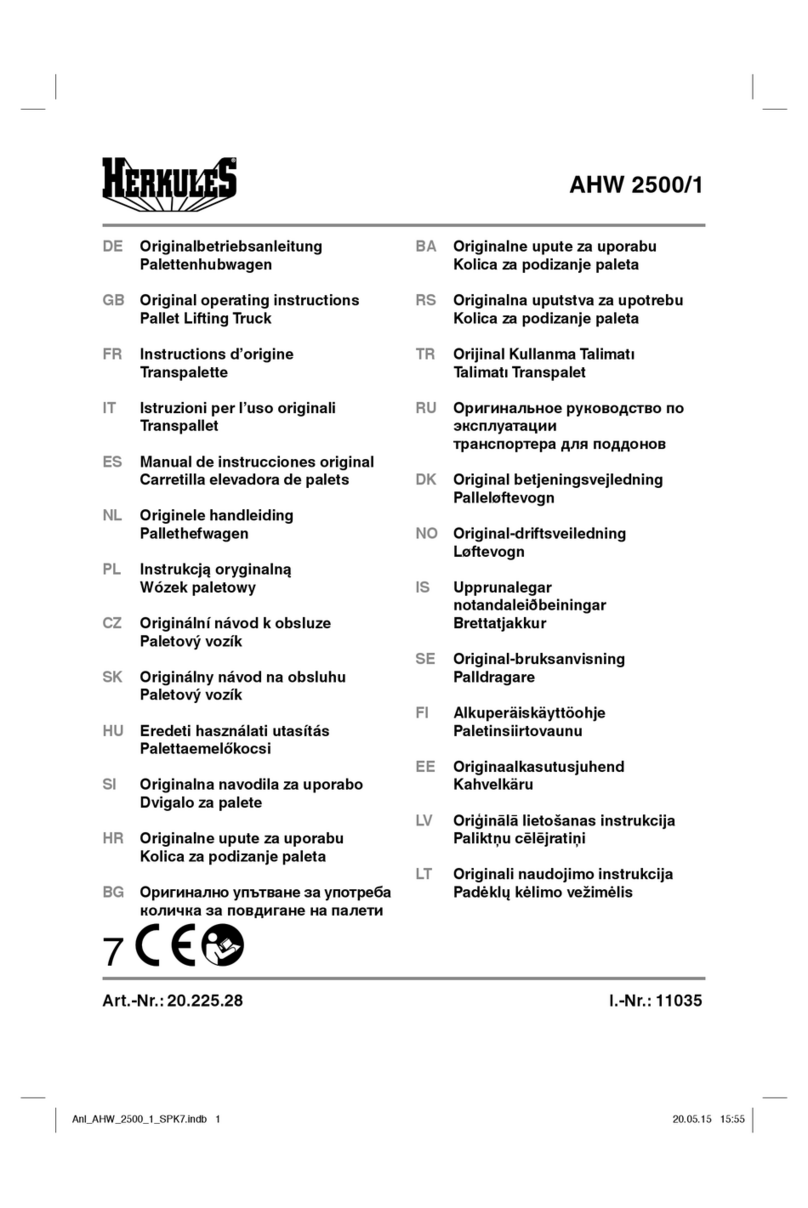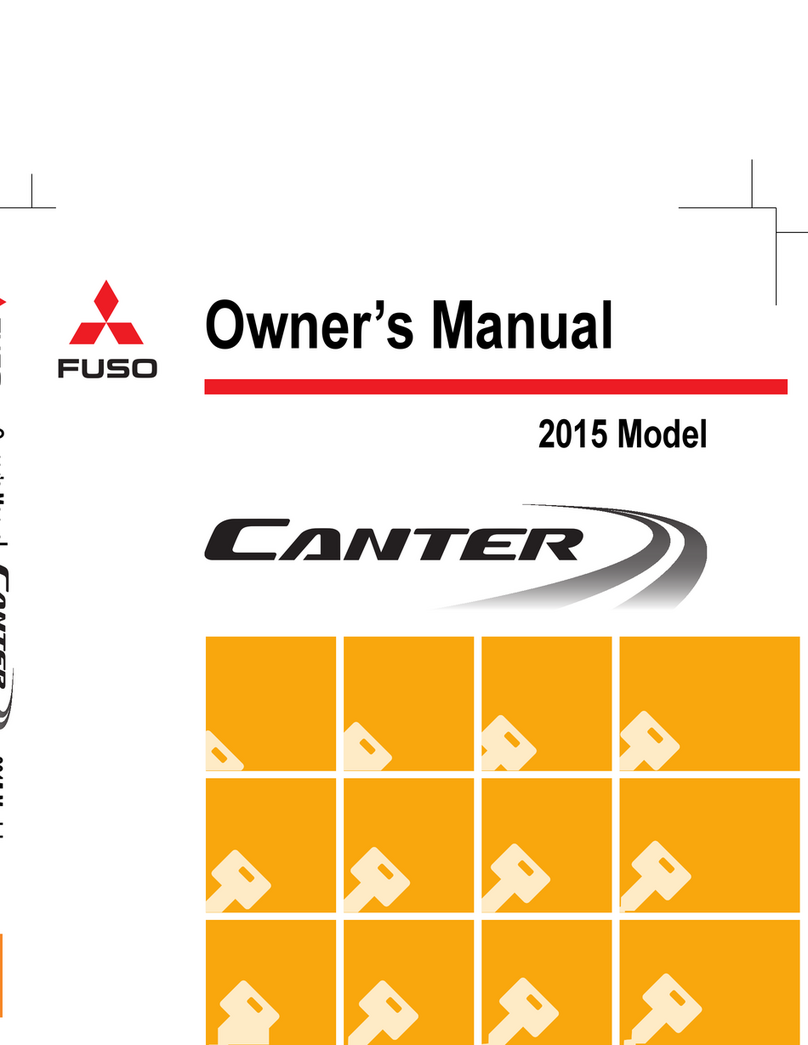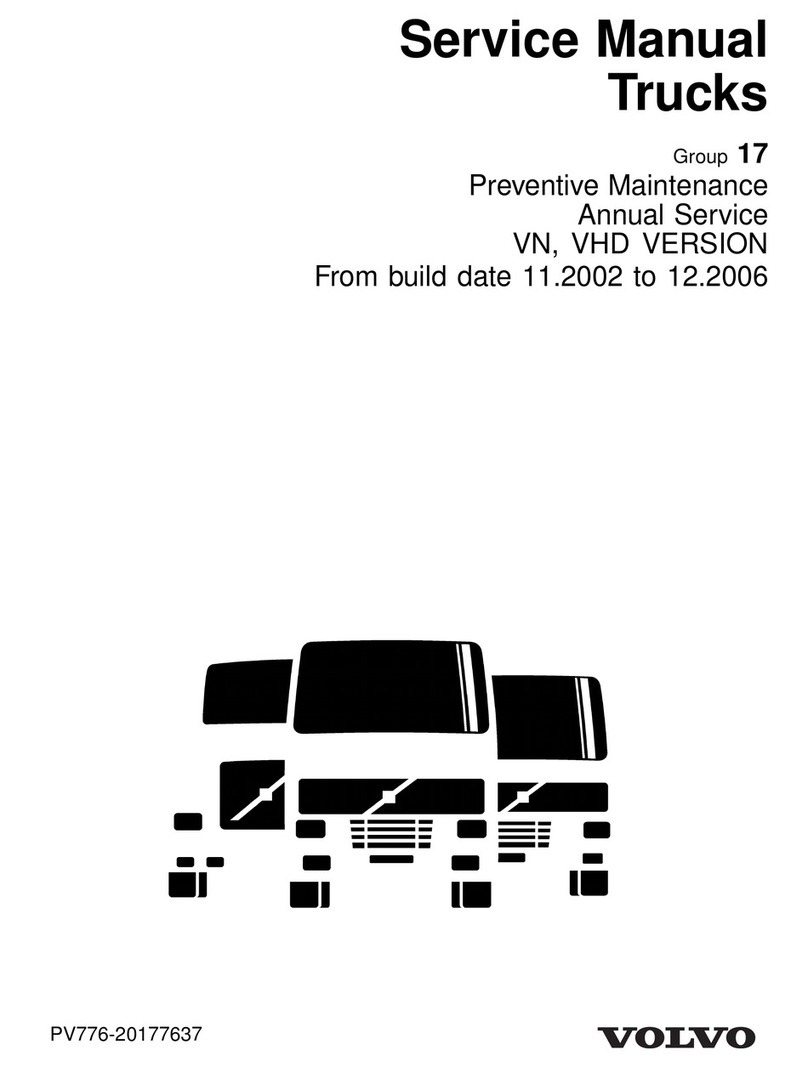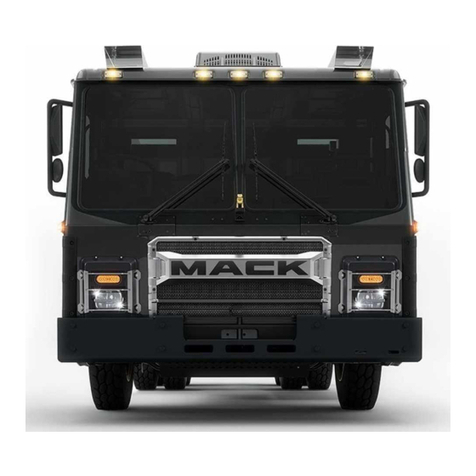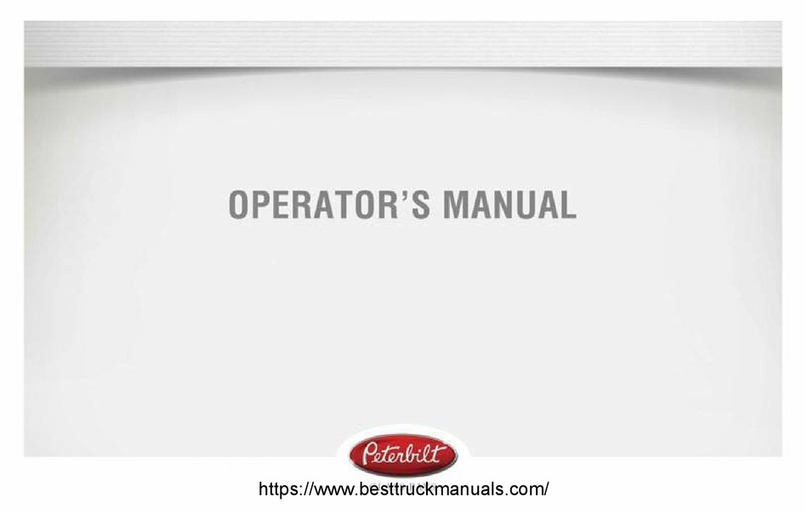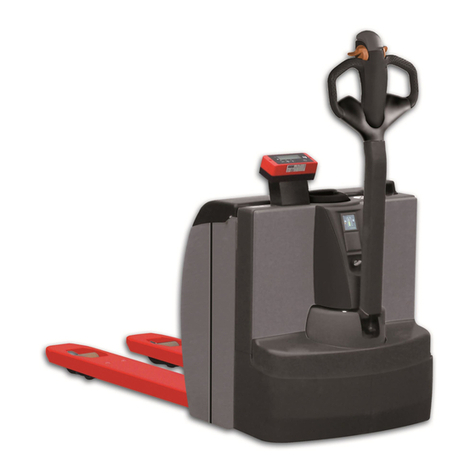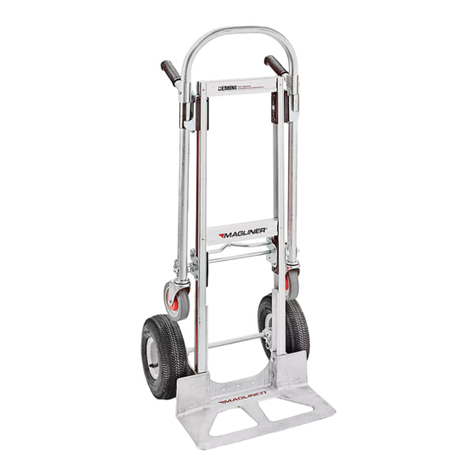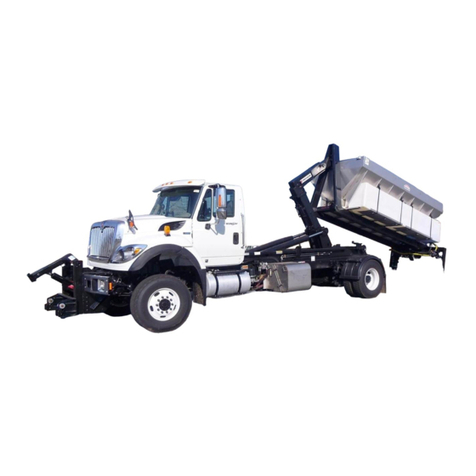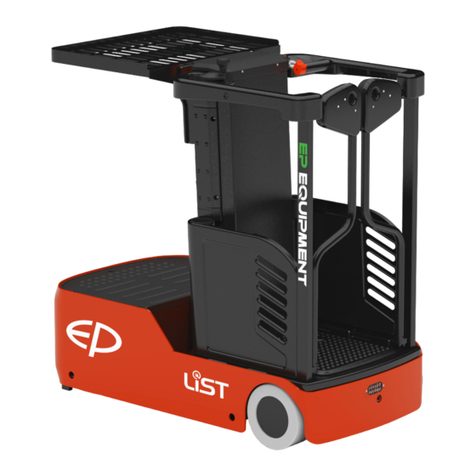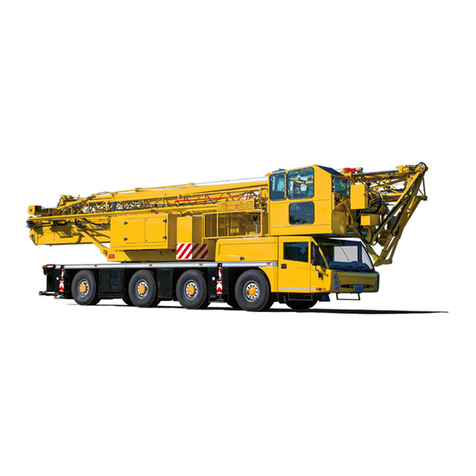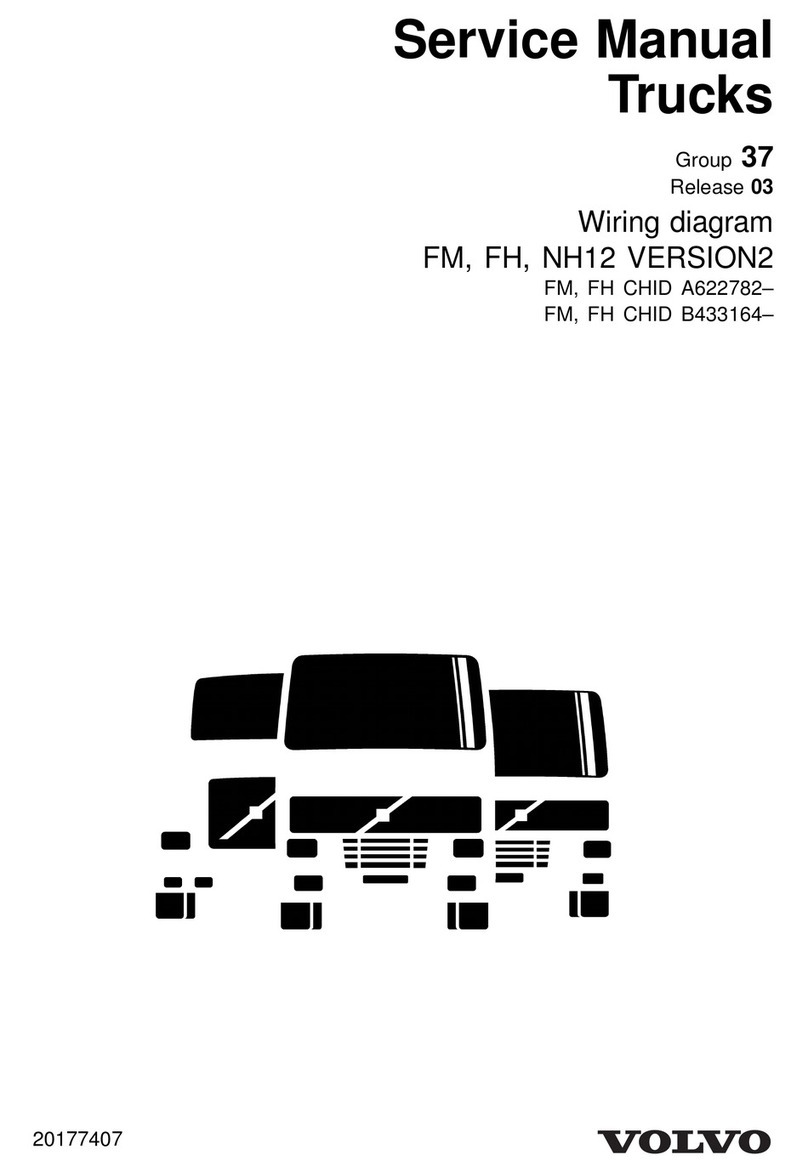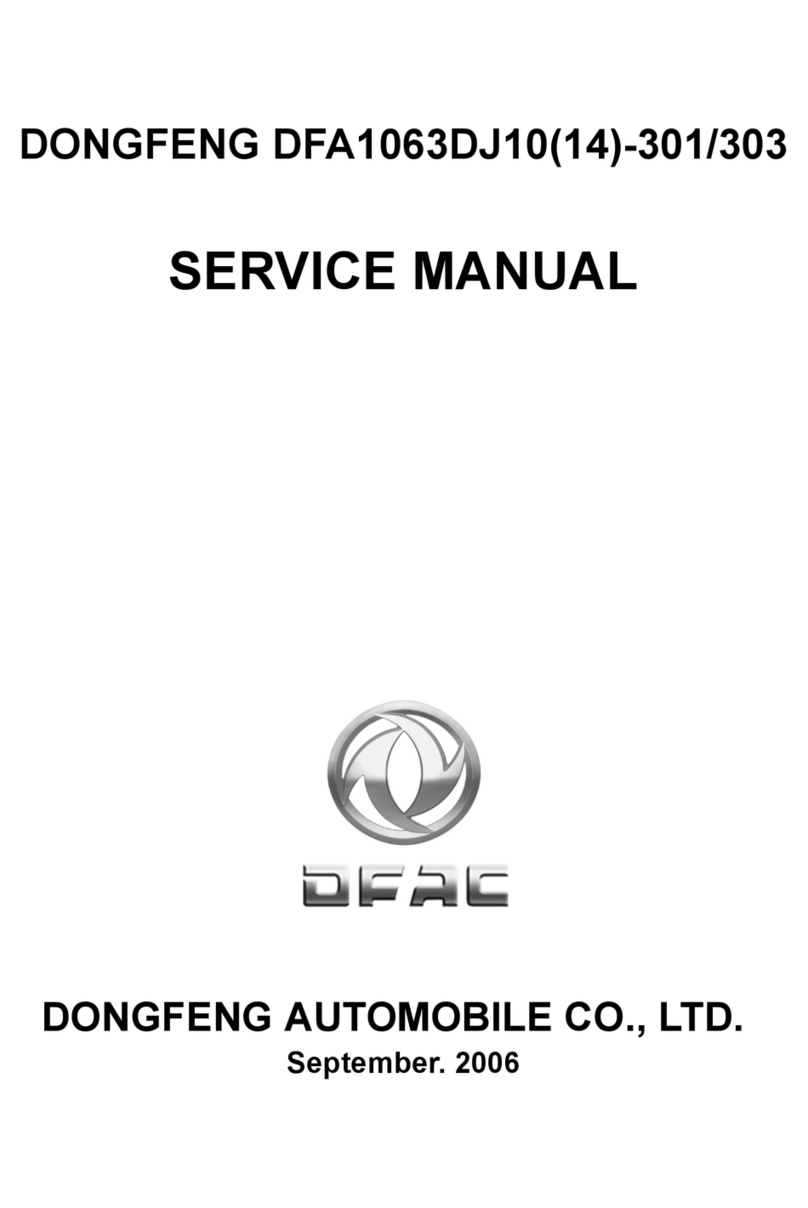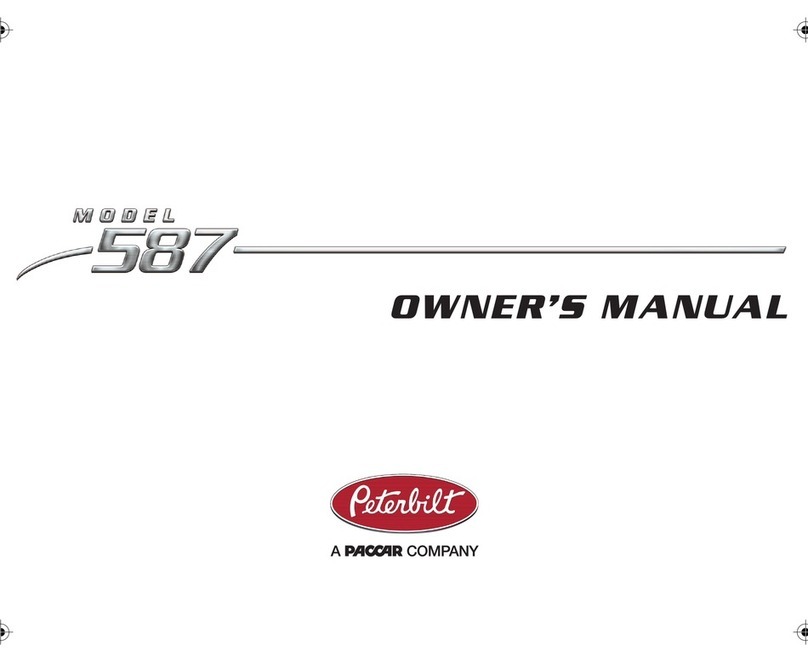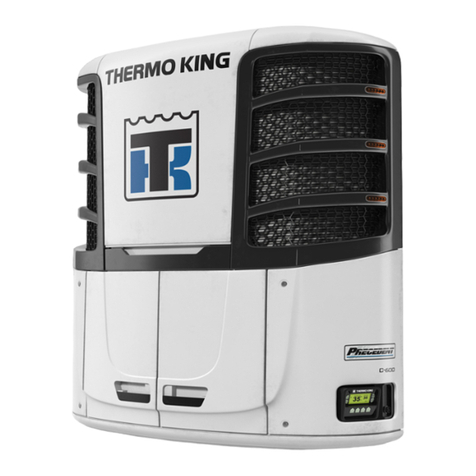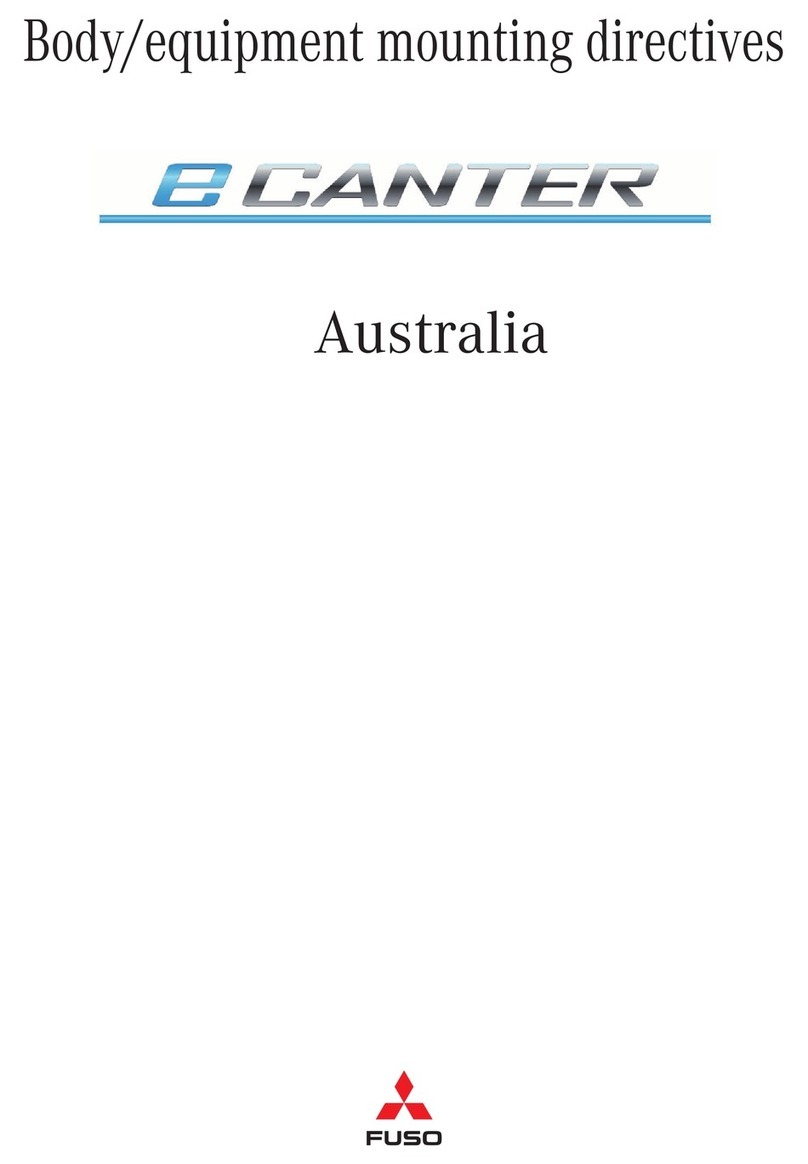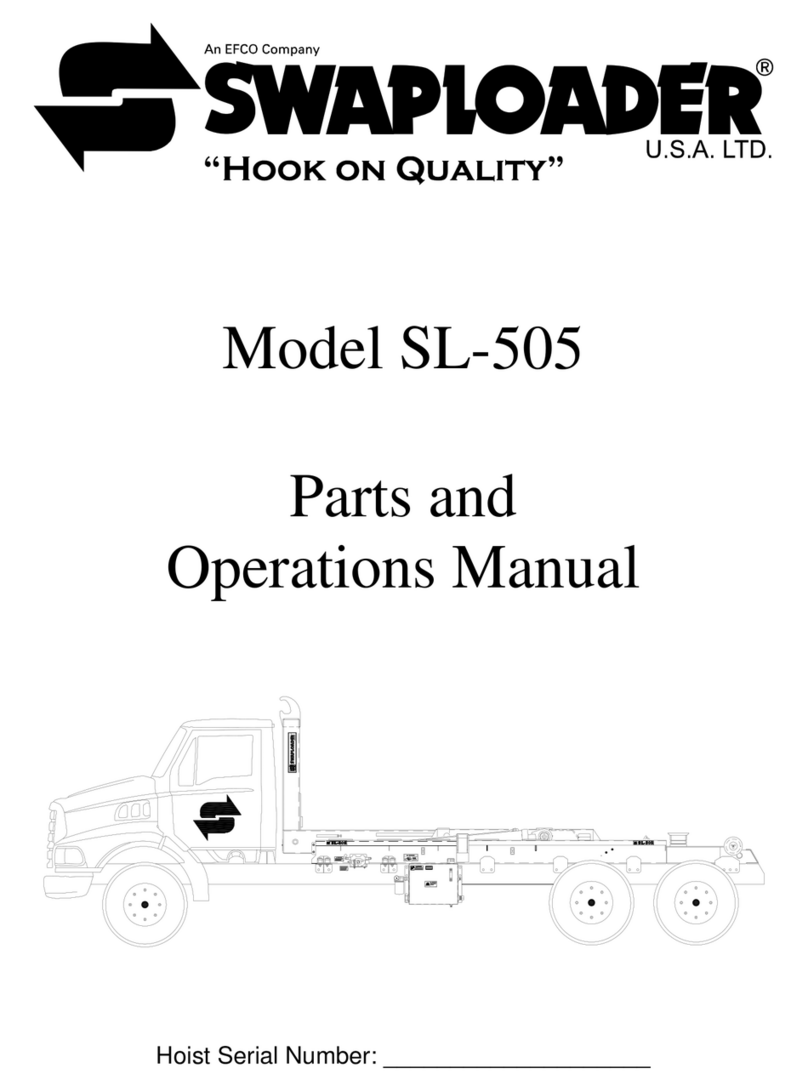HERKULES AHW 2500 User manual

AHW 2500
Art.-Nr.: 20.225.28 I.-Nr.: 11011
쮕Originalbetriebsanleitung Palettenhubwagen
Original operating instructions Pallet Lifting Truck
Mode d’emploi d’origine de la transpalette
Istruzioni per l’uso originali Transpallet
Manual de instrucciones original
Carretilla elevadora de palets
Original betjeningsvejledning Palleløftevogn
Original-bruksanvisning Palldragare
qAlkuperäiskäyttöohje Palettinostovaunu
AEredeti használati utasítás Raklapemelő kocsi
BOriginalne upute za uporabu Kolica za podizanje paleta
jOriginální návod k obsluze Paletový vozík
XOriginalna navodila za uporabo Dvigalo za palete
Orijinal Kullanma Talimatı Transpalet
LOriginal-driftsveiledning Løftevogn
EUpprunalegar notandaleiðbeiningar Brettatjakkur
HOriģinālā lietošanas instrukcija Paliktņu cēlējratiņi
GOriginali naudojimo instrukcija Padėklų kėlimo vežimėlis
.Originaalkasutusjuhend Kahvelkäru
4Оригинална упутства за употребу
Колица за подизање палета
Anleitung_AHW_2500_SPK7:_ 22.08.2011 13:25 Uhr Seite 1

2
1
76
1
2
2
3
4
A
B
5
C
D
3
3
F
B
Anleitung_AHW_2500_SPK7:_ 22.08.2011 13:26 Uhr Seite 2

3
4
B
E
A
C
3
6 7
5
H
L
K
D
(1)
(2)
(3)
Anleitung_AHW_2500_SPK7:_ 22.08.2011 13:26 Uhr Seite 3

4
Achtung!
Beim Benutzen von Geräten müssen einige
Sicherheitsvorkehrungen eingehalten werden, um
Verletzungen und Schäden zu verhindern. Lesen Sie
diese Bedienungsanleitung / Sicherheitshinweise
deshalb sorgfältig durch. Bewahren Sie diese gut auf,
damit Ihnen die Informationen jederzeit zur
Verfügung stehen. Falls Sie das Gerät an andere
Personen übergeben sollten, händigen Sie diese
Bedienungsanleitung / Sicherheitshinweise bitte mit
aus. Wir übernehmen keine Haftung für Unfälle oder
Schäden, die durch Nichtbeachten dieser Anleitung
und den Sicherheitshinweisen entstehen.
1. Sicherheitshinweise
WARNUNG
Lesen Sie alle Sicherheitshinweise und
Anweisungen. Versäumnisse bei der Einhaltung der
Sicherheitshinweise und Anweisungen können
elektrischen Schlag, Brand und/oder schwere
Verletzungen verursachen.
Bewahren Sie alle Sicherheitshinweise und
Anweisungen für die Zukunft auf.
Beachten Sie die geltenden
Unfallverhütungsvorschriften.
Überschreiten Sie die angegeben Nutzlast nicht.
Verwenden Sie den Palettenhubwagen erst, wenn
Sie mit der Funktionsweise vertraut sind, dazu
ausgebildet und angewiesen wurden.
Überprüfen Sie vor jeder Verwendung, das Gerät
auf Beschädigungen und Funktion.
Verwenden Sie den Palettenhubwagen nicht auf
unebenen oder abschüssigen Untergrund.
Der Palettenhubwagen besitzt serienmäßig keine
Bremse. Er darf nicht auf Steigungen und
Gefällen eingesetzt werden.
Tragen Sie Arbeitshandschuhe und
Sicherheitsschuhe.
Der Aufenthalt unter angehobener Last ist
untersagt.
Die zu transportierende Last ist gleichmäßig auf
den Hubgabeln zu verteilen.
Transportieren Sie nie lose aufgestapelte oder
instabile Ladung.
Der Palettenhubwagen darf nicht bei
angehobenen Hubgabeln beladen werden.
Lassen Sie niemals Lasten bei angehobenen
Hubgabeln unbeaufsichtigt.
Greifen Sie niemals in bewegliche Teile.
Keine Personen transportieren.
Halten Sie beim Transport von Lasten einen
Mindestabstand von 60 cm zu anderen Personen.
Der Arbeitsbereich muss gut ausgeleuchtet sein.
2. Gerätebeschreibung (Bild 1/2)
1 Handgriff
2 Betätigungshebel
3 Zugdeichsel
4 Hydraulikeinheit
5 Lenkrollen
6 Hubgabeln
7 Lastrollen (Tandem)
3. Lieferumfang
Öffnen Sie die Verpackung und nehmen Sie das
Gerät vorsichtig aus der Verpackung.
Entfernen Sie das Verpackungsmaterial sowie
Verpackungs-/ und Transportsicherungen (falls
vorhanden).
Überprüfen Sie, ob der Lieferumfang vollständig
ist.
Kontrollieren Sie das Gerät und die Zubehörteile
auf Transportschäden.
Bewahren Sie die Verpackung nach Möglichkeit
bis zum Ablauf der Garantiezeit auf.
ACHTUNG
Gerät und Verpackungsmaterial sind kein
Kinderspielzeug! Kinder dürfen nicht mit
Kunststoffbeuteln, Folien und Kleinteilen spielen!
Es besteht Verschluckungs- und
Erstickungsgefahr!
Palettenhubwagen
Zugdeichsel
Originalbetriebsanleitung
D
Anleitung_AHW_2500_SPK7:_ 22.08.2011 13:26 Uhr Seite 4

5
D
4. Bestimmungsgemäße Verwendung
Das Gerät ist nur zum Transport von Gütern auf
Paletten mit offener Bodenauflage oder mit
Querbrettern außerhalb der Lasträder auf festen,
ebenem Boden bestimmt.
Es dürfen keine Personen mitgenommen oder
gehoben werden.
Das Gerät darf nur nach seiner Bestimmung
verwendet werden. Jede weitere darüber
hinausgehende Verwendung ist nicht
bestimmungsgemäß. Für daraus hervorgerufene
Schäden oder Verletzungen aller Art haftet der
Benutzer/Bediener und nicht der Hersteller.
5. Technische Daten
Gesamthöhe: 1210 mm
Gesamtlänge: 1500 mm
Gabellänge: 1150 mm
Gabelhöhe min.: 80 mm
Gabelhöhe max.: 190 mm
Gabelbreite einzeln: 153 mm
Gabelbreite gesamt: 540 mm
Hub max.: 110 mm
Traglast: 2500 kg
Gewicht ca.: 66 kg
Lenkräder Ø: 180 mm
Lastrollen Ø: 80 mm
6. Montage
Hinweis: Während der kompletten Montage darf das
Wartungsblech (Abb. 2 / Pos. D) nicht abgenommen
werden.
1. (Abb. 2) Schlagen Sie mit einem Splintentreiber
oder Schraubenzieher die Spannhülse (A) aus
dem Bolzen (B). Entfernen Sie anschließend den
Bolzen (B) von der Deichselaufnahme (C).
2. (Abb. 3 / 4) Stecken Sie den Bolzen (B) durch das
Loch der Deichselaufnahme (C) und der
Zugdeichsel (3). Schlagen Sie anschließend die
Spannhülse (A) wieder in den Bolzen (B) ein.
Achten Sie dabei auf die Spannhülsenführung (E)
in der Deichselaufnahme (C).
3. (Abb. 3) Führen Sie die Steuerkette (F) durch das
Loch im Bolzen (B) damit die Hydraulik
funktioniert.
4. (Abb. 5) Hängen Sie die Einstellschraube (H) mit
der vormontierten Sechskantmutter (K) in den
Hydraulikhebel (L) ein.
5. (Abb. 5) Drücken Sie die Zugdeichsel nach unten
und entnehmen Sie das Wartungsblech (D).
Verwaren Sie dieses für spätere
Wartungsarbeiten an der Hydraulik.
Hinweis: Es besteht die Möglichkeit, das Gerät mit
einer Fußfeststellbremse auszustatten. Bei Bedarf
wenden Sie sich an ihren Kundendienst.
Funktion der Fußfeststellbremse:
Drücken Sie die Bremse bis zum Anschlag nach
rechts – die Räder werden blockiert.
Drücken Sie die Bremse nach links – die Räder
werden wieder frei gegeben.
7. Betrieb
Achtung! Beachten Sie die Sicherheitshinweise
(Abschnitt 1.) und Abbildung 7.
Auf der Zugdeichsel befindet sich ein Aufkleber mit
den Schaltgriffstellungen (Abb. 6).
1 = Senken (Absenkstellung)
2 = Fahren (Fahrstellung)
3 = Heben (Hebestellung)
Der Palettenhubwagen darf nur mit abgesenkten
Hubgabeln abgestellt werden.
Die folgenden Funktionen sind möglich und bereits
vom Werk voreingestellt.
Anleitung_AHW_2500_SPK7:_ 22.08.2011 13:26 Uhr Seite 5

6
D
7.1 Anheben der Last (Abb. 1)
Drücken Sie den Betätigungshebel (2) nach unten
(Hebestellung). Anschließend bewegen Sie die
Zugdeichsel (3) mehrmals auf und ab. Dadurch wird
die Last angehoben.
7.2 Ziehen der Last (Abb. 1)
Ziehen Sie den Betätigungshebel (2) in die mittlere
Position (Fahrstellung). Die Hydraulik lässt sich in
dieser Position weder nach oben pumpen noch
absenken.
7.3 Absenken der Last (Abb. 1)
Bewegen Sie den Palettenhubwagen nicht und
ziehen Sie den Betätigungshebel (2) ganz nach oben
(Absenkstellung). Dadurch wird die Last abgesenkt.
Nach loslassen des Betätigungshebels (2) bewegt er
sich automatisch in die mittlere Position (Fahrstellung)
zurück.
8. Einstellung der Hydrauliksteuerung
Falls die oben in Abschnitt 7. beschriebenen
Funktionen fehlerhaft arbeiten, wurde die
Hydrauliksteuerung verändert und muss neu
eingestellt werden.
8.1 Hubgabeln heben sich in der Fahrstellung
(Abb. 5) Drehen Sie die Sechskantmutter (K) an der
Einstellschraube (H) solange im Uhrzeigersinn, bis
sich die Hubgabeln nicht mehr heben und die
Fahrstellung ordnungsgemäß funktioniert.
8.2 Hubgabeln senken sich in der Fahrstellung
(Abb. 5) Drehen Sie die Sechskantmutter (K) an der
Einstellschraube (H) solange entgegen dem
Uhrzeigersinn, bis sich die Hubgabeln nicht mehr
senken und die Fahrstellung ordnungsgemäß
funktioniert.
8.3 Hubgabeln senken sich nicht in der
Absenkstellung
(Abb. 5) Drehen Sie die Sechskantmutter (K) an der
Einstellschraube (H) solange im Uhrzeigersinn, bis
sich die Hubgabeln durch hochziehen des
Betätigungshebels absenken. Prüfen Sie anschließen
die Funktion der Fahrstellung um zu gewährleisten,
dass sich die Einstellmutter in der richtigen Position
befindet.
8.4 Hubgabeln heben sich nicht in der
Hebestellung
(Abb. 5) Drehen Sie die Sechskantmutter (K) an der
Einstellschraube (H) solange entgegen dem
Uhrzeigersinn, bis sich die Hubgabeln in der
Hebestellung des Betätigungshebels anheben.
Prüfen Sie anschließen die Funktion der Fahrstellung
und Absenkstellung um zu gewährleisten, dass sich
die Einstellmutter in der richtigen Position befindet.
9. Reinigung, Wartung und
Ersatzteilbestellung
9.1 Reinigung
Zur Reinigung des Gehäuses ein leicht feuchtes Tuch
verwenden.
9.2 Wartung
Zur Erhaltung der Funktionsfähigkeit ist der
Palettenhubwagen regelmäßig zu überprüfen und
gegebenenfalls zu warten. Alle hier nicht aufgeführten
Reparatur- und Wartungsarbeiten sind durch einen
Kundendienst oder einen autorisierten Fachmann
durchzuführen. Dies gilt im Besonderen für das
Wechseln von Lenk- und Lastrollen.
Bei Funktionsstörungen ist der Palettenhubwagen
unverzüglich außer Betrieb zu setzen und von einer
autorisierten Person zu reparieren. Es dürfen nur
Original-Ersatzteile verwendet werden.
Mindestens jährlich, bei Bedarf auch öfter, ist der
Palettenhubwagen durch einen Sachkundigen zu
prüfen. Es wird empfohlen, die Prüfungen in einem
Prüfbuch festzuhalten.
Nach Reparatur oder Wartung vergewissern, ob alle
sicherheitstechnischen Teile angebracht und in
einwandfreiem Zustand sind.
Verletzungsgefährdende Teile von anderen Personen
und Kindern unzugänglich aufbewahren.
Achtung: Laut Produkthaftungsgesetz haften wir
nicht für Schäden die durch unsachgemäße
Reparatur verursacht werden oder wenn bei
Ersatzteilen nicht Originalteile oder von uns
freigegebene Teile verwendet werden. Ebenso haften
wir nicht für Schäden von unsachgemäßen
Reparaturen. Beauftragen sie einen Kundendienst
oder einen autorisierten Fachmann. Entsprechendes
gilt auch für Zubehörteile.
Anleitung_AHW_2500_SPK7:_ 22.08.2011 13:26 Uhr Seite 6

7
D
9.2.1 Hydrauliköl auffüllen
Überprüfen Sie halbjährlich den Hydraulikölstand.
Zum Nachfüllen oder wechseln des Hydrauliköls
verwenden Sie nur Hydrauliköl der Viskositätsklassen
HLP 46 (- 20 °C - + 40°C) . Die Füllmenge beträgt ca.
0,4 Liter.
Achtung! Zur Vermeidung von Umweltbelastungen
durch Ölaustritt bei der Wartung des Gerätes ist
austretendes Öl frühzeitig durch saugfähige
Materialien (z.B. Holzspäne, trockene Stofflappen) zu
binden. Verschmutztes Wartungsmaterial und
Betriebsstoffe in einer dafür vorgesehenen
Sammelstelle abgeben und das verschmutzte
Material ordnungsgemäß zu entsorgen.
1. Hubgabeln vollständig absenken
2. Öleinfüllschraube und Dichtung vom Ölbehälter
entfernen.
3. Hydrauliköl bis zum Bohrungsrand einfüllen
4. Öleinfüllschraube und Dichtung wieder in den
Ölbehälter einfüllen.
5. Hydrauliksystem mit mehreren
Pumpbewegungen der Zugdeichsel entlüften
9.3 Hydraulikeinheit entlüften
Sollten sich die Hubgabeln in der Hebestellung nicht
heben, stellen Sie den Betätigungshebel auf die
Senkposition und bewegen Sie die Zugdeichsel
mehrmals auf und ab.
9.4 Bewegliche Teile schmieren
Bewegliche Teile regelmäßig schmieren und fetten.
9.5 Ersatzteilbestellung
Bei der Ersatzteilbestellung sollten folgende
Angaben gemacht werden:
Typ des Gerätes
Artikelnummer des Gerätes
Ident- Nummer des Gerätes
Ersatzteil- Nummer des erforderlichen Ersatzteils
Aktuelle Preise und Infos finden Sie unter
www.isc-gmbh.info
10. Lagerung
Wird der Palettenhubwagen längere Zeit nicht
benutzt, lagern Sie ihn gründlich gereinigt,
abgeschmiert und abgedeckt an einem dunklen,
trockenen und frostfreiem sowie für Kinder
unzugänglichem Ort. Die optimale Lagertemperatur
liegt zwischen 5 und 30 ˚C.
11. Entsorgung und Wiederverwertung
Das Gerät befindet sich in einer Verpackung um
Transportschäden zu verhindern. Diese Verpackung
ist Rohstoff und ist somit wieder verwendbar oder
kann dem Rohstoffkreislauf zurückgeführt werden.
Das Gerät und dessen Zubehör bestehen aus
verschiedenen Materialien, wie z.B. Metall und
Kunststoffe. Führen Sie defekte Bauteile der
Sondermüllentsorgung zu. Fragen Sie im
Fachgeschäft oder in der Gemeindeverwaltung nach!
Anleitung_AHW_2500_SPK7:_ 22.08.2011 13:26 Uhr Seite 7

8
12. Hinweise zur Fehlerbeseitigung
Wird das Gerät richtig betrieben, dürften keine Störungen auftreten. Bei Störungen prüfen Sie die folgenden
Möglichkeiten, bevor Sie den Kundendienst verständigen.
Störung mögliche Ursache Abhilfe
Hubgabeln lassen sich nicht
bis zur Maximalhöhe
anheben
zu wenig Hydrauliköl Hydrauliköl nachfüllen
Hubgabeln lassen sich nicht
anheben
kein Hydrauliköl vorhanden
Hydrauliköl verschmutzt
Einstellmutter (K) ist zu hoch
eingestellt
Luft in Hydraulikeinheit
Hydrauliköl einfüllen
Hydrauliköl wechseln
Einstellmutter (K) einstellen
(s. Kapitel 8.)
Hydraulikeinheit entlüften (s. Kapitel 9.)
Hubgabeln lassen sich nicht
senken
Kolbenstange oder Pumpengehäuse
aufgrund Überladung oder ungleich-
mäßiger Lastverteilung beschädigt
Kolben ist fest
Einstellmutter (K) ist falsch eingestellt
Kolbenstange bzw. Pumpengehäuse
austauschen*
Kolben austauschen*
Einstellmutter (K) einstellen
(s. Kapitel 8.)
Undichte Stellen Dichtungen sind verschlissen oder
beschädigt
Hydraulikbauteil defekt
Dichtungen ersetzen*
Hydraulikbauteil ersetzen*
Hubgabeln senken sich,
ohne dass das Ablassventil
funktioniert
Hydrauliköl verschmutzt
Hydraulikbauteil defekt
Luft in Hydraulikeinheit
Dichtungen sind verschlissen oder
beschädigt
Einstellmutter (K) ist falsch eingestellt
Hydrauliköl wechseln
Hydraulikbauteil ersetzen*
Hydraulikeinheit entlüften (s. Kapitel 9.)
Dichtungen ersetzen*
Einstellmutter (K) einstellen
(s. Kapitel 8.)
Achtung!
* Diese Arbeiten müssen vom qualifizierten zugelassenen Fachpersonal ausgeführt werden.
Anleitung_AHW_2500_SPK7:_ 22.08.2011 13:26 Uhr Seite 8

Important!
When using the equipment, a few safety precautions
must be observed to avoid injuries and damage.
Please read the complete operating instructions and
safety information with due care. Keep these
operating instructions in a safe place so that the
information is available at all times. If you give the
equipment to any other person, hand over these
operating instructions and the safety information as
well. We cannot accept any liability for damage or
accidents which arise due to failure to follow these
instructions and the safety information.
1. Safety information
CAUTION
Read all the safety regulations and instructions.
Any errors made in following the safety information
and instructions set out below may result in an
electric shock, fire and/or serious injury.
Keep all safety information and instructions in a
safe place for future use.
Pay attention to the accident prevention
regulations.
Never exceed the specified payload.
Do not use the pallet lifting truck until you have
familiarized yourself with its mode of operation
and been trained and instructed on how to use it.
Check the equipment for damage and make sure
that it is in good working order each time before
you use it.
Do not use the pallet lifting truck on uneven
ground or slopes.
The pallet lifting truck has no brake. It is not
allowed to be used on upward or downward
inclines.
Wear work gloves and safety shoes.
It is imperative to stay clear of the area under
lifted loads.
The load you want to transport must be
distributed evenly over the lifting forks.
Never transport loosely piled loads or unstable
loads.
The pallet lifting truck is not allowed to be loaded
when the lifting forks are in a raised position.
Loads on raised lifting forks must never be left
unattended.
Do not reach into moving parts.
Do not transport people.
Keep a minimum distance of 60 cm from other
persons when transporting loads.
The work area must be well illuminated.
2. Layout (Fig. 1 / 2)
1 Handle
2 Control lever
3 Drawbar
4 Hydraulic unit
5 Steering rollers
6 Lifting forks
7 Load-bearing rollers (tandem)
3. Items supplied
Open the packaging and take out the equipment
with care.
Remove the packaging material and any
packaging and/or transportation braces (if
available).
Check to see if all items are supplied.
Inspect the equipment and accessories for
transport damage.
If possible, please keep the packaging until the
end of the guarantee period.
IMPORTANT
The equipment and packaging material are not
toys! Do not let children play with plastic bags,
foils or small parts! There is a danger of
swallowing or suffocating!
Pallet lifting truck
Drawbar
Original operating instructions
4. Intended use
The equipment is designed for transporting goods on
pallets with an open base or with stringer boards
extending beyond the load wheels. The equipment
must be used on a firm, flat surface.
It is prohibited to use the equipment to pick up or
transport people.
The equipment may only be used for its intended
purpose. Any other use is deemed to be a case of
misuse. The user/operator and not the manufacturer
will be liable for any damage or injuries of any kind
caused as a result of this.
9
GB
Anleitung_AHW_2500_SPK7:_ 22.08.2011 13:26 Uhr Seite 9

5. Technical data
Overall height: 1210 mm
Overall length: 1500 mm
Fork length: 1150 mm
Fork height min.: 80 mm
Fork height max.: 190 mm
Fork width single: 153 mm
Fork width total: 540 mm
Lift max.: 110 mm
Load: 2500 kg
Weight approx.: 66 kg
Steering wheels Ø: 180 mm
Load-bearing rollers Ø: 80 mm
6. Assembly
Note: The maintenance plate (Fig. 2 / Item D) must
not be removed throughout the assembly work.
1. (Fig. 2) Use a pin driver or screwdriver to knock
the clamping sleeve (A) out of the bolt (B). Then
remove the bolt (B) from the drawbar mount (C).
2. (Fig. 3 / 4) Insert the bolt (B) through the hole in
the drawbar mount (C) and the drawbar (3). Then
knock the clamping sleeve (A) back into the bolt
(B). As you do so, watch the clamping sleeve
passage (E) in the drawbar mount (C).
3. (Fig. 3) Pass the control chain (F) through the
hole in the bolt (B) so that the hydraulics system
works.
4. (Fig. 5) Hook the setting screw (H) with the pre-
mounted hex nut (K) into the hydraulics lever (L).
5. (Fig. 5) Press down the drawbar and remove the
maintenance plate (D). Keep the maintenance
plate in a safe place for subsequent maintenance
work on the hydraulics.
Note: The equipment can be optionally equipped with
a foot-activated parking brake. If required, please
contact your customer service team.
Operating the foot-activated parking brake:
Push the brake to the right as far as the stop – the
wheels will be blocked.
Push the brake to the left – the wheels will be
released again.
7. Functions
Important! Note the safety information (section 1.)
and Figure 7.
On the drawbar is a sticker showing the positions of
the handle switch (Fig. 6).
1 = Lower (lowering position)
2 = Travel (traveling position)
3 = Lift (lifting position)
The pallet lifting truck is allowed to be parked only
when the lifting forks are lowered.
The following functions are possible and were already
set in the factory.
7.1 Lifting the load (Fig. 1)
Press down the control lever (2) (lifting position).
Then pump the drawbar (3) up and down several
times. The load will be lifted.
7.2 Pulling the load (Fig. 1)
Pull up the control lever (2) into the middle position
(traveling position). In this position the hydraulics
cannot be used for lifting or lowering.
7.3 Lowering the load (Fig. 1)
With the pallet lifting truck at a standstill, pull up the
control lever (2) to the very top (lowering position).
The load will be lowered. When you now release the
control lever (2), it will automatically return to the
middle position (traveling position).
8. Setting the hydraulics control
system
The functions described in section 7. will not work
correctly if the hydraulics control settings are altered.
In this case you must re-set the hydraulics control
system.
8.1 The lifting forks rise when the control lever is
in the traveling position
(Fig. 5) Turn the hex nut (K) on the setting screw (H)
clockwise to the point where the lifting forks no longer
rise and the traveling position works correctly.
8.2 The lifting forks descend when the control
lever is in the traveling position
(Fig. 5) Turn the hex nut (K) on the setting screw (H)
counter-clockwise to the point where the lifting forks
no longer descend and the traveling position works
correctly.
10
GB
Anleitung_AHW_2500_SPK7:_ 22.08.2011 13:26 Uhr Seite 10

8.3 The lifting forks do not descend when the
control lever is in the lowering position
(Fig. 5) Turn the hex nut (K) on the setting screw (H)
clockwise to the point where the lifting forks are
lowered by pulling up the control lever. Then check
the operation of the traveling position in order to
guarantee that the setting nut is in the correct
position.
8.4 The lifting forks do not rise when the control
lever is in the lifting position
(Fig. 5) Turn the hex nut (K) on the setting screw (H)
counter-clockwise to the point where the lifting forks
are raised when the control lever is in the lifting
position. Then check the operation of the traveling
position and the lowering position in order to
guarantee that the setting nut is in the correct
position.
9. Cleaning, maintenance and ordering
of spare parts
9.1 Cleaning
Use a damp cloth to clean the casing.
9.2 Servicing
The pallet lifting truck must be regularly inspected
and if necessary serviced in order to keep it in good
working order. All the repair and maintenance jobs
which are not listed here must be carried out by a
customer service center or an authorized specialist.
This applies in particular to replacing the steering and
load-bearing rollers.
If malfunctions arise, the pallet lifting truck must be
taken out of operation immediately and be repaired
by an authorized person. Only original spare parts are
allowed to be used.
The pallet lifting truck must be inspected by an expert
at least once a year or more often if necessary. It is
recommended to record the inspections in an
inspection book.
After carrying out repair or maintenance work, ensure
that all safety parts are installed and in perfect
condition.
Store potentially hazardous parts out of the reach of
other persons and children.
Important: In accordance with the German Product
Liability Act, we are not liable for any damages if they
result from improper repairs to the product or if parts
are replaced by items other than genuine parts or
parts approved by us. Furthermore, we are not liable
for any damages if they result from improper repairs
to the product. Arrange for your customer service or
an authorized workshop to do the work. The same
applies to accessory parts.
9.2.1 Filling up with hydraulic oil
Check the oil level every six months. When filling up
with hydraulic oil or replacing it, use only hydraulic oil
from the viscosity classes HLP 46 (- 20 °C - + 40°C) .
A complete filling equals approx. 0.4 liters.
Important! To prevent environmental contamination
from escaping oil, use absorbent materials (e.g. wood
chips, dry rags) promptly to pick up any oil spills.
Take soiled maintenance material and operating
materials to an appropriate collection point and
dispose of the soiled material correctly.
1. Lower the lifting forks as far as possible
2. Remove the oil filler plug and seal from the oil
tank.
3. Fill in hydraulic oil up to the brim
4. Reinsert the oil filler plug and seal into the oil
tank.
5. Vent the hydraulics system with several pumping
movements of the drawbar
9.3 Venting the hydraulic unit
If the lifting forks do not rise when the control lever is
in the lifting position, move the control lever into the
lower position and move the drawbar up and down
again several times.
9.4 Lubricating the moving parts
Lubricate and grease the moving parts regularly.
9.5 Ordering spare parts
Please provide the following information on all orders
for spare parts:
Model/type of the equipment
Article number of the equipment
ID number of the equipment
Part number of the required spare part
For our latest prices and information please go to
www.isc-gmbh.info
10. Storage
If you are not going to use the pallet lifting truck for a
long time, store it under covers and out of children’s
reach in a dark and dry place at above freezing
temperature after you have cleaned it thoroughly and
lubricated it. The ideal storage temperature is
between 5 und 30 °C.
11
GB
Anleitung_AHW_2500_SPK7:_ 22.08.2011 13:26 Uhr Seite 11

11. Disposal and recycling
The equipment is supplied in packaging to prevent it
from being damaged in transit. The raw materials in
this packaging can be reused or recycled. The
equipment and its accessories are made of various
types of material, such as metal and plastic. Defective
components must be disposed of as special waste.
Ask your dealer or your local council!
12
GB
Anleitung_AHW_2500_SPK7:_ 22.08.2011 13:26 Uhr Seite 12

13
GB
12. Troubleshooting
If the equipment is operated properly you should experience no problems with malfunctions or faults. In the
event of any malfunctions or faults, please check the following before you contact your customer services.
Fault Possible cause Remedy
The lifting forks cannot be
raised to the maximum
height
Too little hydraulic oil Fill in hydraulic oil
The lifting forks cannot be
raised
No hydraulic oil
The hydraulic oil is dirty
The setting nut (K) is too high
Air in the hydraulic unit
Fill in hydraulic oil
Change the hydraulic oil
Set the setting nut (K) (see section 8.)
Vent the hydraulic unit (see section 9.)
The lifting forks cannot be
lowered
The piston rod or pump housing has
been damaged by overloading or an
uneven load distribution
The piston is stuck
The setting nut (K) is set wrongly
Replace the piston rod or pump
housing*
Replace the piston*
Set the setting nut (K) (see section 8.)
Leaks The seals are worn or damaged
The hydraulic module is defective
Replace the seals*
Replace the hydraulic module*
The lifting forks descend
without the relief valve
working
The hydraulic oil is dirty
The hydraulic module is defective
Air in the hydraulic unit
The seals are worn or damaged
The setting nut (K) is set wrongly
Change the hydraulic oil
Replace the hydraulic module*
Vent the hydraulic unit (see section 9.)
Replace the seals*
Set the setting nut (K) (see section 8.)
Important!
* This work must be performed by qualified and approved specialists.
Anleitung_AHW_2500_SPK7:_ 22.08.2011 13:26 Uhr Seite 13

Attenzione!
Nell’usare gli apparecchi si devono prendere diverse
misure di sicurezza per evitare lesioni e danni. Quindi
leggete attentamente queste istruzioni per
l’uso/avvertenze di sicurezza. Conservate bene le
informazioni per averle a disposizione in qualsiasi
momento. Se date l’apparecchio ad altre persone,
consegnate anche queste istruzioni per
l’uso/avvertenze di sicurezza insieme all’apparecchio.
Non ci assumiamo alcuna responsabilità per incidenti
o danni causati dal mancato rispetto di queste
istruzioni e delle avvertenze di sicurezza.
1. Avvertenze di sicurezza
AVVERTIMENTO
Leggete tutte le avvertenze di sicurezza e le
istruzioni. Dimenticanze nel rispetto delle
avvertenze di sicurezza e delle istruzioni possono
causare scosse elettriche, incendi e/o gravi lesioni.
Conservate tutte le avvertenze e le istruzioni per
eventuali necessità future.
Rispettate le norme infortunistiche vigenti.
Non superate il carico utile indicato.
Utilizzate il transpallet solo dopo aver acquisito
familiarità con il funzionamento ed essere stati
istruiti e informati al riguardo.
Controllate prima di ogni utilizzo che
l’apparecchio non sia danneggiato e funzioni
correttamente.
Non utilizzate il transpallet su superfici irregolari o
ripide.
Il transpallet non è dotato di serie di freni. Non
deve essere utilizzato in pendenza o su piani
molto inclinati.
Indossate guanti da lavoro e scarpe di sicurezza.
È vietato sostare sotto i carichi sospesi.
Il carico da trasportare deve essere distribuito
uniformemente sulle forche.
Non devono essere mai trasportati carichi
instabili o che non siano ben impilati.
Il transpallet non deve essere caricato con le
forche sollevate.
Non lasciate mai carichi senza sorveglianza
quando le forche sono sollevate.
Non mettete mai le mani nelle parti mobili.
Non trasportate persone.
Mantenete una distanza minima di 60 cm da altre
persone durante il trasporto di carichi.
La zona di lavoro deve essere ben illuminata.
2. Descrizione dell’apparecchio (Fig.
1/2)
1 Impugnatura
2 Leva di azionamento
3 Timone
4 Unità idraulica
5 Rotelle orientabili
6 Forche
7 Ruote di carico (tandem)
3. Elementi forniti
Aprite l’imballaggio e togliete con cautela
l’apparecchio dalla confezione.
Togliete il materiale d’imballaggio e anche i fermi
di trasporto / imballaggio (se presenti).
Controllate che siano presenti tutti gli elementi
forniti.
Verificate che l’apparecchio e gli accessori non
presentino danni dovuti al trasporto.
Se possibile, conservate l’imballaggio fino alla
scadenza della garanzia.
ATTENZIONE
L’apparecchio e il materiale d’imballaggio non
sono giocattoli! I bambini non devono giocare
con sacchetti di plastica, film e piccoli pezzi!
Sussiste pericolo di ingerimento e
soffocamento!
Transpallet
Timone
Istruzioni per l’uso originali
4. Utilizzo proprio
L’apparecchio è destinato soltanto al trasporto di
merce su pallet con base aperta o tavole poste
trasversalmente oltre le ruote di carico su superficie
stabile e piana.
È vietato trasportare o sollevare persone.
L’apparecchio deve essere usato solamente per lo
scopo a cui è destinato. Ogni altro tipo di uso che
esuli da quello previsto non è conforme.
L’utilizzatore/l’operatore, e non il costruttore, è
responsabile dei danni e delle lesioni di ogni tipo che
ne risultino.
14
I
Anleitung_AHW_2500_SPK7:_ 22.08.2011 13:26 Uhr Seite 14

5. Caratteristiche tecniche
Altezza totale: 1210 mm
Lunghezza totale: 1500 mm
Lunghezza forche: 1150 mm
Altezza forche min.: 80 mm
Altezza forche max.: 190 mm
Larghezza forca singola: 153 mm
Larghezza forche totale: 540 mm
Corsa max.: 110 mm
Carico: 2500 kg
Peso ca.: 66 kg
Ruote orientabili Ø: 180 mm
Ruote di carico Ø: 80 mm
6. Montaggio
Avvertenza: durante tutto il montaggio non si deve
togliere la lamiera di manutenzione (Fig. 2 / Pos. D).
1. (Fig. 2) Con una spina conica o con un cacciavite
fate uscire la bussola di serraggio (A) dal bullone
(B). Togliete poi il bullone (B) dalla sede del
timone (C).
2. (Fig. 3 / 4) Inserite il bullone (B) attraverso il foro
della sede del timone (C) e del timone stesso (3).
Poi inserite di nuovo la bussola di serraggio (A)
nel bullone (B). Nel fare questo osservate la
guida della bussola di serraggio (E) nella sede
del timone (C).
3. (Fig. 3) Inserite la catena di comando (F)
attraverso il foro nel bullone (B) in modo che il
sistema idraulico funzioni.
4. (Fig. 5) Agganciate la vite di regolazione (H) con il
dado a testa esagonale (K) in nella leva idraulica
(L).
5. (Fig. 5) Premete il timone verso il basso e togliete
la lamiera di manutenzione (D). Conservatela per
lavori successivi di manutenzione al sistema
idraulico.
Avvertenza: è possibile munire l’apparecchio di un
freno di stazionamento a pedale. Se necessario
rivolgetevi al servizio assistenza.
Funzionamento del freno di stazionamento a
pedale
Spingete il freno verso destra fino alla battuta - le
ruote si bloccano.
Spingete il freno verso sinistra - le ruote si sbloccano.
7. Esercizio
Attenzione! Osservate le avvertenze di sicurezza
(sezione 1) e la figura 7.
Sul timone è applicato un adesivo con le posizioni
dell’impugnatura di comando (Fig. 6).
1 = Abbassamento (posizione di abbassamento)
2 = Marcia (posizione di marcia)
3 = Sollevamento (posizione di sollevamento)
Il transpallet deve essere parcheggiato solo con le
forche abbassate.
Sono possibili le seguenti funzioni che vengono già
impostate in fabbrica.
7.1 Sollevare il carico (Fig. 1)
Premete la leva di azionamento (2) (posizione di
sollevamento). Poi sollevate e abbassate più volte il
timone (3). In questo modo viene sollevato il carico.
7.2 Tirare il carico (Fig. 1)
Portate la leva di azionamento (2) in posizione
centrale (posizione di marcia). In questa posizione
non è possibile aumentare o diminuire la pressione
del sistema idraulico.
7.3 Abbassare il carico (Fig. 1)
Non muovete il transpallet e sollevate completamente
la leva di azionamento (2) (posizione di
abbassamento). In questo modo viene abbassato il
carico. Dopo aver mollato la leva di azionamento (2)
questa ritorna automaticamente in posizione centrale
(posizione di marcia).
8. Regolazione del comando idraulico
Se le funzioni descritte nella sezione 7 non operano
correttamente, significa che è stato modificato il
comando idraulico che deve essere regolato di
nuovo.
8.1 Le forche si sollevano in posizione di marcia
(Fig. 5) Ruotate il dado a testa esagonale (K) sulla
vite di regolazione (H) in senso orario fino a quando
le forche non si sollevano più e la posizione di marcia
funziona correttamente.
8.2 Le forche si abbassano in posizione di
marcia
(Fig. 5) Ruotate il dado a testa esagonale (K) sulla
vite di regolazione (H) in senso antiorario fino a
quando le forche non si abbassano più e la posizione
di marcia funziona correttamente.
15
I
Anleitung_AHW_2500_SPK7:_ 22.08.2011 13:26 Uhr Seite 15

8.3 Le forche non si abbassano in posizione di
abbassamento
(Fig. 5) Ruotate il dado a testa esagonale (K) sulla
vite di regolazione (H) in senso orario fino a quando
le forche si abbassano sollevando la leva di
azionamento. Controllate quindi il funzionamento
della posizione di marcia per garantire che il dado di
regolazione si trovi nella posizione corretta.
8.4 Le forche non si sollevano in posizione di
sollevamento
(Fig. 5) Ruotate il dado a testa esagonale (K) sulla
vite di regolazione (H) in senso antiorario fino a
quando le forche si sollevano con la leva di
azionamento in posizione di sollevamento.
Controllate quindi il funzionamento della posizione di
marcia e in posizione di abbassamento per garantire
che il dado di regolazione si trovi nella posizione
corretta.
9. Pulizia, manutenzione e ordinazione
dei pezzi di ricambio
9.1 Pulizia
Per la pulizia del rivestimento usate un panno
leggermente umido.
9.2 Manutenzione
Eseguire regolarmente il controllo ed eventualmente
la manutenzione del transpallet per mantenerne la
funzionalità. Tutte le operazioni di riparazione e
manutenzione che non sono elencate qui devono
essere eseguite dal servizio assistenza o da un
tecnico autorizzato. Ciò vale in particolare per la
sostituzione delle ruote orientabili e per quelle di
carico.
In caso di anomalie di funzionamento del transpallet
mettetelo immediatamente fuori esercizio e fatelo
riparare da una persona autorizzata. Si devono
utilizzare solo ricambi originali.
Il transpallet deve essere controllato da un tecnico
una volta all’anno, se necessario anche più spesso.
Si consiglia di registrare le verifiche in un apposito
libretto di manutenzione.
Accertatevi dopo la riparazione o la manutenzione
che tutte le parti di tecnica di sicurezza siano montate
e in perfetto stato.
Conservate i pezzi che possono causare lesioni
lontani dalla portata di altre persone e di bambini.
Attenzione: secondo la Legge relativa alla
responsabilità per i prodotti non rispondiamo per
danni causati da una riparazione impropria o se non
si usano i pezzi di ricambio originali o pezzi da noi
autorizzati. Non rispondiamo nemmeno per danni
causati in seguito a riparazioni improprie. Incaricate il
servizio assistenza o un tecnico autorizzato. Lo
stesso vale anche per gli accessori.
9.2.1 Riempimento dell’olio idraulico
Controllate il livello dell’olio ogni sei mesi. Per
rabboccare o cambiare l’olio idraulico usate solo olio
idraulico delle classi di viscosità HLP 46 (- 20 °C - +
40°C) . La carica è di ca. 0,4 litri.
Attenzione! Per evitare che l’ambiente venga
inquinato dalla fuoriuscita di olio, esso deve essere
legato tempestivamente con materiali assorbenti (per
es. segatura, stracci asciutti) qualora fuoriesca
durante la manutenzione dell’apparecchio.
Consegnate il materiale sporco di manutenzione e di
esercizio in un apposito punto di raccolta. Il materiale
sporco va smaltito in modo appropriato.
1. Abbassate completamente le forche.
2. Togliete il tappo a vite di riempimento e la
guarnizione dal serbatoio dell’olio.
3. Riempite con olio idraulico fino al bordo del foro.
4. Rimettete il tappo a vite di riempimento e la
guarnizione dal serbatoio dell’olio.
5. Sfiatare il sistema idraulico con alcuni movimenti
di pompaggio del timone.
9.3 Sfiatare l’unità idraulica
Se le forche in posizione di sollevamento non si
sollevano, posizionate la leva di azionamento in
posizione di abbassamento e sollevate e abbassate il
timone più volte.
9.4 Lubrificazione delle parti mobili
Lubrificate e oliate regolarmente le parti mobili.
9.5 Ordinazione di pezzi di ricambio
In caso di ordinazione di pezzi di ricambio è
necessario indicare quanto segue:
Tipo di apparecchio
Numero di articolo dell’apparecchio
Numero di identificazione dell’apparecchio
Numero del pezzo di ricambio richiesto
Per i prezzi attuali e le informazioni attuali si veda
www.isc-gmbh.info
16
I
Anleitung_AHW_2500_SPK7:_ 22.08.2011 13:26 Uhr Seite 16

10. Conservazione
Se il transpallet non viene utilizzato per un tempo
prolungato, conservatelo in un luogo buio, asciutto, al
riparo dal gelo e non accessibile ai bambini dopo
averlo pulito in maniera appropriata, lubrificato e
coperto. La temperatura ottimale per la
conservazione è compresa tra i 5 e i 30 °C.
11. Smaltimento e riciclaggio
L’apparecchio si trova in un imballaggio per evitare i
danni dovuti al trasporto. Questo imballaggio
rappresenta una materia prima e può perciò essere
utilizzato di nuovo o riciclato. L’apparecchio e i suoi
accessori sono fatti di materiali diversi, per es.
metallo e plastica. Consegnate i pezzi difettosi allo
smaltimento di rifiuti speciali. Per informazioni
rivolgetevi a un negozio specializzato o
all’amministrazione comunale!
17
I
Anleitung_AHW_2500_SPK7:_ 22.08.2011 13:26 Uhr Seite 17

18
I
Attenzione!
* Questi lavori devono essere eseguiti da tecnici qualificati e autorizzati.
12. Avvertenze per l’eliminazione di anomalie
Se l’apparecchio viene fatto funzionare correttamente non si dovrebbero verificare anomalie. In caso di
anomalie, verificate le seguenti possibilità prima di rivolgervi al servizio assistenza.
Anomalia Possibile causa Rimedio
Non è possibile sollevare le
forche fino all’altezza
massima
Olio idraulico insufficiente Rabboccate l’olio idraulico
Non è possibile sollevare le
forche
Manca l’olio idraulico.
Olio idraulico sporco.
Dado di regolazione (K) regolato
troppo alto
Aria nell’unità idraulica
Rabboccate l’olio idraulico
Sostituite l’olio idraulico.
Regolate il dado di regolazione (K)
(vedi Cap. 8).
Sfiatate l’unità idraulica (vedi Cap. 9).
Non è possibile abbassare
le forche
L’asta dello stantuffo o la carcassa
della pompa sono danneggiate a
causa di un sovraccarico o di una
distribuzione non uniforme del carico.
Pistone bloccato
Dado di regolazione (K) regolato in
modo scorretto
Sostituite l’asta dello stantuffo ovvero
la carcassa della pompa*
Sostituite il pistone*
Regolate il dado di regolazione (K)
(vedi Cap. 8).
Punti di perdita Guarnizioni consumate o danneggiate
Gruppo idraulico difettoso
Sostituite le guarnizioni*
Sostituite il gruppo idraulico*
Le forche si abbassano
senza che la valvola di
scarico funzioni
Olio idraulico sporco.
Gruppo idraulico difettoso
Aria nell’unità idraulica
Guarnizioni consumate o danneggiate
Dado di regolazione (K) regolato in
modo scorretto
Sostituite l’olio idraulico.
Sostituite il gruppo idraulico*
Sfiatate l’unità idraulica (vedi Cap. 9).
Sostituite le guarnizioni*
Regolate il dado di regolazione (K)
(vedi Cap. 8).
Anleitung_AHW_2500_SPK7:_ 22.08.2011 13:26 Uhr Seite 18

¡Atención!
Al usar aparatos es preciso tener en cuenta una serie
de medidas de seguridad para evitar lesiones o
daños. Por este motivo, es preciso leer atentamente
este manual de instrucciones/advertencias de
seguridad. Guardar esta información
cuidadosamente para poder consultarla en cualquier
momento. En caso de entregar el aparato a terceras
personas, será preciso entregarles, asimismo, el
manual de instrucciones/advertencias de seguridad.
No nos hacemos responsables de accidentes o
daños provocados por no tener en cuenta este
manual y las instrucciones de seguridad.
1. Instrucciones de seguridad
AVISO
Leer todas las instrucciones de seguridad e
indicaciones. El incumplimiento de dichas
instrucciones e indicaciones puede provocar
descargas, incendios y/o daños graves.
Guardar todas las instrucciones de seguridad e
indicaciones para posibles consultas
posteriores.
Tener en cuenta las prescripciones vigentes en
materia de prevención de accidentes
No superar la carga útil indicada.
Utilizar la carretilla elevadora de palets una vez
que se haya familiarizado con el funcionamiento,
así como formado e instruido al respecto.
Antes de ponerle en marcha comprobar que el
aparato no sufra daños y que funcione
correctamente.
No utilizar la carretilla elevadora de palets sobre
un suelo irregular o empinado.
La carretilla elevadora de palets no lleva frenos
de serie. No se puede utilizar sobre pendientes ni
inclinaciones.
Llevar guantes de trabajo y calzado de
seguridad.
Está prohibido permanecer bajo una carga
elevada.
La carga a transportar se debe distribuir de
manera uniforme entre las horquillas elevadoras.
No transportar nunca cargas apiladas de manera
suelta o inestables.
No cargar la carretilla elevadora de palets
cuando las horquillas estén elevadas.
No dejar nunca sin vigilancia las cargas cuando
las horquilla estén elevadas.
No tocar nunca las piezas móviles.
No transportar a personas.
Cuando se transporten cargas, mantener una
distancia mínima de 60 cm con respecto a otras
personas.
El área de trabajo debe estar bien iluminada.
2. Descripción del aparato (fig. 1/2)
1 Empuñadura
2 Palanca de accionamiento
3 Barra de tracción
4 Unidad hidráulica
5 Ruedecillas orientables
6 Horquillas elevadoras
7 Ruedecillas de carga (tándem)
3. Volumen de entrega
Abrir el embalaje y extraer cuidadosamente el
aparato.
Retirar el material de embalaje, así como las
fijaciones del embalaje y para el transporte (si
existen).
Comprobar que el volumen de entrega esté
completo.
Comprobar que el aparato y los accesorios no
presenten daños ocasionados durante el
transporte.
Si es posible, almacenar el embalaje hasta que
transcurra el periodo de garantía.
ATENCIÓN
¡El aparato y el material de embalaje no son un
juguete! ¡No permitir que los niños jueguen con
bolsas de plástico, láminas y piezas pequeñas!
¡Riesgo de ingestión y asfixia!
Carretilla elevadora de palets
barra de tracción
Manual de instrucciones original
4. Uso adecuado
Este aparato sólo ha sido diseñado para transportar
materiales sobre palets abiertos o con tablas
transversales fuera de las ruedecillas de carga sobre
una base plana y estable.
No debe utilizarse para transportar o elevar
personas.
Este aparato sólo debe emplearse en aquellos casos
para los que se ha destinado. Cualquier otro uso no
será adecuado. En caso de uso inadecuado, el
fabricante no se hace responsable de daños o
19
E
Anleitung_AHW_2500_SPK7:_ 22.08.2011 13:26 Uhr Seite 19

lesiones de cualquier tipo; el responsable es el
usuario u operario de la máquina.
5. Características técnicas
Altura total: 1210 mm
Longitud total: 1500 mm
Longitud de horquillas: 1150 mm
Altura mín. de horquillas: 80 mm
Altura máx. de horquillas: 190 mm
Ancho de cada horquilla: 153 mm
Ancho total de las horquillas: 540 mm
Elevación máx.: 110 mm
Capacidad de carga: 2500 kg
Peso aprox.: 66 kg
Ruedecillas orientables Ø: 180 mm
Ruedecillas de carga Ø: 80 mm
6. Montaje
Advertencia: Durante el montaje completo del
aparato no se puede retirar la chapa de
mantenimiento (fig. 2/pos. D).
1. (Fig. 2) Con ayuda de un punzón o un
destornillador golpear el manguito de sujeción (A)
para sacarlo del perno (B). A continuación, quitar
el perno (B) del alojamiento de la barra (C).
2. (Fig. 3/4) Introducir el perno (B) por el agujero del
alojamiento de la barra (C) y la barra de tracción
(3). A continuación, golpear el manguito de
sujeción (A) para volver a meterlo en el perno (B).
Prestar atención a la guía del manguito de
sujeción (E) en el alojamiento de la barra (C).
3. (Fig. 3) Introducir la cadena de distribución (F) a
través del agujero en el perno (B) para que
funcione el sistema hidráulico.
4. (Fig. 5) Colgar el tornillo de ajuste (H) con la
tuerca hexagonal premontada (K) en la palanca
hidráulica (L).
5. (Fig. 5) Presionar la barra de tracción hacia abajo
y retirar la chapa de mantenimiento (D).
Guardarla para cuando se tengan que realizar
trabajos de mantenimiento en el sistema
hidráulico.
Advertencia: Existe la posibilidad de equipar el
aparato con un freno de estacionamiento de pedal. Si
es necesario, ponerse en contacto con el servicio de
asistencia técnica.
Funcionamiento del freno de estacionamiento de
pedal:
Pulsar el freno hasta el tope hacia la derecha: se
bloquean las ruedecillas.
Presionar el freno hacia la izquierda: las ruedecillas
se vuelven a desbloquear.
7. Funcionamiento
¡Atención! Tener en cuenta las instrucciones de
seguridad (apdo. 1) y la figura 7.
En la barra de tracción hay un adhesivo con las
posiciones de la empuñadura (fig. 6).
1 = Bajar (posición de descenso)
2 = Desplazar (posición de desplazamiento)
3 = Elevar (posición de elevación)
La carretilla elevadora de palets solo se puede parar
con las horquillas de elevación bajadas.
Las funciones descritas a continuación vienen ya
configuradas de fábrica:
7.1 Elevar la carga (fig. 1)
Pulsar la palanca de accionamiento (2) hacia abajo
(posición de elevación). A continuación, mover la
barra de tracción (3) varias veces hacia arriba y
abajo. De este modo se eleva la carga.
7.2 Tirar de la carga (fig. 1)
Poner la palanca de accionamiento (2) en la posición
central (posición de desplazamiento).En esta
posición el sistema hidráulico no puede subir ni bajar.
7.3 Bajar la carga (fig. 1)
No mover la carretilla elevadora de palets y tirar
completamente hacia arriba de la palanca de
accionamiento (2) (posición de descenso). De este
modo se baja la carga. Tras soltar la palanca de
accionamiento (2) vuelve de manera automática a la
posición central (posición de desplazamiento).
8. Ajuste del sistema de mando
hidráulico
Si las funciones descritas en el apdo. 7 no trabajan
correctamente quiere decir que se han hecho
cambios en el mando del sistema hidráulico y se
tiene que volver a ajustar.
20
E
Anleitung_AHW_2500_SPK7:_ 22.08.2011 13:26 Uhr Seite 20
This manual suits for next models
1
Table of contents
Languages:
Other HERKULES Truck manuals
